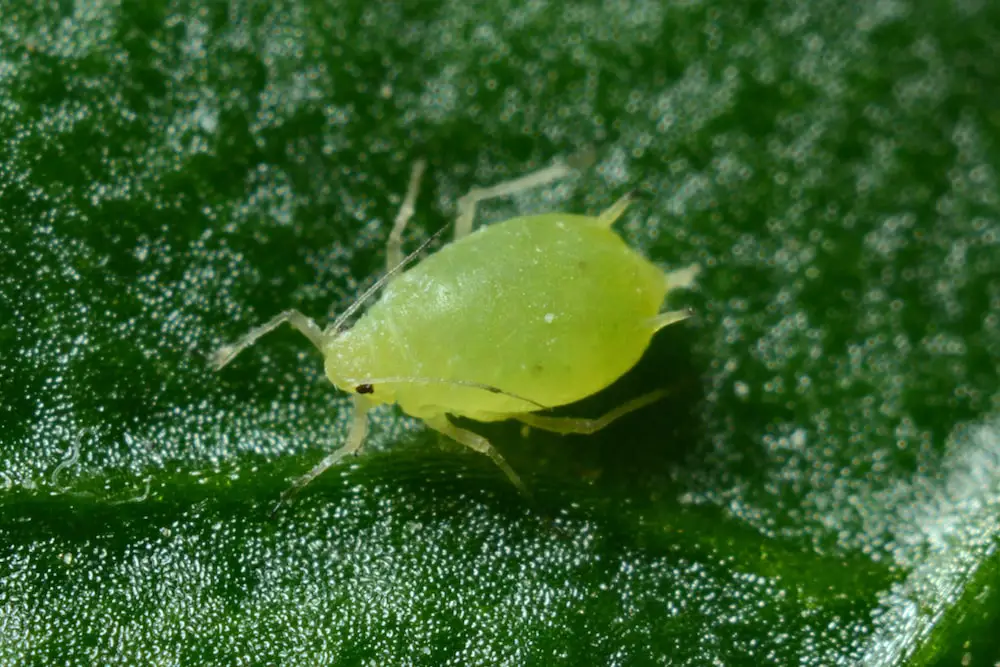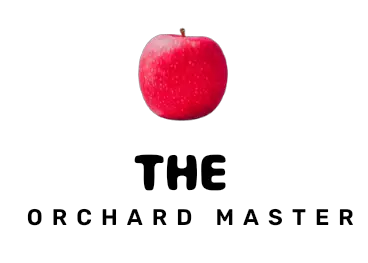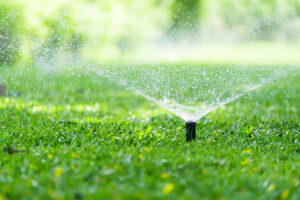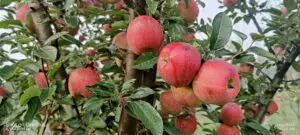Apple trees are one of the most popular fruit crops in India, especially in the northern states like Himachal Pradesh, Jammu and Kashmir, and Uttarakhand.
However, apple cultivation also faces many challenges from pests and diseases that can reduce the yield and quality of the fruits.
To protect their orchards from these threats, apple growers use various pesticides that can be classified into three main categories: insecticides, fungicides, and herbicides.

Insecticides
Insecticides are chemicals that kill or repel insects that feed on or damage apple trees. Some of the common insect pests that affect apple trees in India are aphids, mites, leafrollers, codling moths, apple maggots, and fruit flies.
Some of the commonly used insecticides for apple trees are
HMO: Horticultural mineral oil is a type of pesticide that is used to control pests on plants. It is a non-toxic, non-residual, and biodegradable oil that is made from petroleum. Horticultural mineral oil works by suffocating pests and disrupting their metabolism. It is effective against a variety of pests, including aphids, scale insects, mealybugs, and spider mites.
Neem oil: Neem oil is a natural insecticide that is derived from the seeds of the neem tree. It has been used for centuries in traditional medicine and agriculture. Neem oil is effective against a wide range of pests, including insects, mites, and nematodes. It works by disrupting the insect’s hormones and nervous system, which can kill them or prevent them from reproducing.
Malathion: is an organophosphate insecticide that is widely used in agriculture, public health, and household pest control. It is effective against a variety of insects, including mosquitoes, flies, ticks, and fleas. Malathion is also used to control agricultural pests, such as aphids, leafhoppers, and beetles
Malathion works by disrupting the insect’s nervous system. It is a stomach poison, which means that it must be ingested by the insect to be effective. Malathion is also a contact poison, which means that it can kill insects that come into contact with it.
Permethrin: Permethrin is an insecticide that is used to control a variety of pests, including mosquitoes, ticks, and fleas. It is a contact insecticide, which means that it kills pests on contact. Permethrin is available in a variety of forms, including sprays, liquids, and dust.
Chlorpyrifos: is an organophosphate pesticide that has been used on crops, animals, buildings, and in other settings, to kill several pests, including insects and worms. It acts on the nervous systems of insects by inhibiting the acetylcholinesterase enzyme. Chlorpyrifos was patented in 1966 by Dow Chemical Company. eg Cyclone
Dimethoate: is an organophosphate insecticide and acaricide. It was patented and introduced in the 1950s by American Cyanamid. Like other organophosphates, dimethoate is an acetylcholinesterase inhibitor that disables cholinesterase, an enzyme essential for central nervous system function. It acts both by contact and through ingestion. It is readily absorbed and distributed throughout plant tissues and is degraded relatively rapidly.
Dimethoate is used to control a wide range of insects, including aphids, thrips, leafhoppers, and whiteflies on ornamental plants, alfalfa, apples, corn, cotton, grapefruit, grapes, lemons, melons, oranges, pears, pecans, safflower, sorghum, soybeans, tangerines, tobacco, tomatoes, watermelons, wheat, and other vegetables. It is also used to control mites on fruit trees and ornamental plants. eg Rogor
Imidacloprid: Imidacloprid is a neonicotinoid insecticide that is used to control a wide range of insects, including aphids, beetles, leafhoppers, mosquitoes, and whiteflies. It is a systemic insecticide, which means that it is absorbed by plants and transported throughout the plant, making it effective against insects that feed on the leaves, stems, and roots of plants. Imidacloprid is also effective against insects that burrow into plants, such as termites. eg TATAMIDA, IMADA
Quinalphos: is an organophosphate pesticide that is used to control a wide range of insects, including aphids, beetles, leafhoppers, mosquitoes, and whiteflies. It is a colorless to reddish-brown liquid that is odorless or has a slight odor. Quinalphos is a contact and stomach poison that works by disrupting the insect’s nervous system.
Quinalphos is used in agriculture to control insects on a variety of crops, including cotton, corn, rice, soybeans, and vegetables. It is also used in public health to control insects that spread diseases, such as mosquitoes and ticks. eg Ekalus EC25% , FLASH
Thiacloprid: is a neonicotinoid insecticide that is used to control a wide range of insects, including aphids, beetles, leafhoppers, mosquitoes, and whiteflies. It is a systemic insecticide, which means that it is absorbed by plants and transported throughout the plant, making it effective against insects that feed on the leaves, stems, and roots of plants. Thiacloprid is also effective against insects that burrow into plants, such as termites . eg ALANTO
Cypermethrin: is a synthetic pyrethroid insecticide. It is a fast-acting neurotoxin in insects. It is easily degraded on soil and plants but can be effective for weeks when applied to indoor inert surfaces. Exposure to sunlight, water, and oxygen will accelerate its decomposition. eg Rallis Alpha , Ralothrin
These insecticides have different modes of action, application methods, and safety precautions that need to be followed by the growers.
Fungicides
Fungicides are chemicals that prevent or control fungal infections that can cause diseases in apple trees.
Some of the common fungal diseases that affect apple trees in India are scabs, powdery mildew, rust, canker, and rot.
Some of the commonly used fungicides for apple trees are
Captan: Captan is a fungicide that is used to control a variety of diseases, including apple scabs, powdery mildew, and rust. It is a protectant fungicide, which means that it prevents diseases from developing. Captan is available in a variety of forms, including dust, liquids, and sprays. eg TATA CAPTAF , CAPTAN 50
Sulfur: Sulfur is a fungicide that is used to control a variety of diseases, including apple scab, powdery mildew, and rust. It is a protectant fungicide, which means that it prevents diseases from developing. Sulfur is available in a variety of forms, including dust, liquids, and sprays.
Mancozeb: is a dithiocarbamate fungicide that is used to control a wide range of fungal diseases in a variety of crops, including fruits, vegetables, nuts, and field crops. It is a contact fungicide, which means that it kills fungi that come into direct contact with it. Mancozeb is a multi-site fungicide, which means that it works by disrupting several different biochemical pathways in fungi, making it more difficult for them to develop resistance. eg INDOFIL M-45,DHANUKA M -45,
Difenoconazole: is a broad-spectrum triazole fungicide used to control a variety of plant diseases, including powdery mildew, rust, and leaf spot. It is a systemic fungicide, which means that it is absorbed by the plant and transported throughout the plant, making it effective against diseases that attack the leaves, stems, and roots of plants. Difenoconazole is also effective against diseases that burrow into plants, such as termites. eg SCORE, D-ZOLE
Dodine: is a fungicide that is used to control a variety of plant diseases, including powdery mildew, black spot, and scab. It is a systemic fungicide, which means that it is absorbed by the plant and transported throughout the plant, making it effective against diseases that attack the leaves, stems, and roots of plants. Dodine is also effective against diseases that burrow into plants, such as termites. eg SUPERSTAR
Hexaconazole: is a broad-spectrum systemic triazole fungicide used to control a variety of fungi, particularly ascomycetes, and basidiomycetes. It is commonly used in the control of apple, coffee, and peanut diseases.
Hexaconazole is a white crystalline solid that is slightly soluble in water. It is a systemic fungicide, which means that it is absorbed by the plant and transported throughout the plant, making it effective against diseases that attack the leaves, stems, and roots of plants. Hexaconazole is also effective against diseases that burrow into plants, such as termites. eg TATA CONTAF, HEXADHAN PLUS
Hexaconazole works by disrupting the fungal cell membrane, causing the fungus to die. It is a relatively persistent fungicide, meaning that it can remain in soil and water for long periods of time.
Flusilazole: is a broad-spectrum, systemic fungicide used to control a variety of plant diseases, including powdery mildew, rust, and leaf spot. It is a member of the triazole class of fungicides, which are also used as antifungal drugs. Flurilazole works by disrupting the fungal cell membrane, causing the fungus to die. eg GOVERNER 40 EC ,CURSOR
Tebuconazole: is a triazole fungicide used in agriculture to treat plant pathogenic fungi. It is a systemic fungicide, which means that it is absorbed by the plant and transported throughout the plant, making it effective against diseases that attack the leaves, stems, and roots of plants. Tebuconazole is also effective against diseases that burrow into plants, such as termites. eg LARK, CAVIET
Metiram: is a contact fungicide that is used to control a wide range of fungal diseases in a variety of crops, including fruits, vegetables, nuts, and field crops. It is a zinc ethylenebisdithiocarbamate (EBDC) fungicide.
Metiram works by disrupting the fungal cell membrane, causing the fungus to die. It is a relatively safe fungicide when used according to label directions. However, it can be harmful if swallowed, inhaled, or absorbed through the skin. Symptoms of poisoning may include nausea, vomiting, diarrhea, headache, dizziness, blurred vision, sweating, muscle weakness, and seizures. In severe cases, poisoning can lead to death. eg POLYRAM CABRIOTOP
Myclobutanil: is a broad-spectrum, systemic fungicide used to control a variety of plant diseases, including powdery mildew, rust, and leaf spot. It is a member of the triazole class of fungicides, which are also used as antifungal drugs. Myclobutanil works by disrupting the fungal cell membrane, causing the fungus to die. eg GRAPPLE
Ziram: is a white, odorless, water-soluble powder that is used as a fungicide and a rubber vulcanization accelerator. It is a zinc dimethyldithiocarbamate, and is a member of the dithiocarbamate class of fungicides. eg CUMAN L
Ziram is effective against a wide range of fungi, including powdery mildew, black spot, and scab. It works by disrupting the fungal cell membrane, causing the fungus to die. Ziram is a protectant fungicide, which means that it must be applied before the fungus infects the plant.
Zineb: is a white or light yellow, odorless, water-soluble powder that is used as a fungicide. It is a zinc ethylenebisdithiocarbamate, and is a member of the dithiocarbamate class of fungicides.
Zineb is effective against a wide range of fungi, including powdery mildew, black spot, and scab. It works by disrupting the fungal cell membrane, causing the fungus to die. Zineb is a protectant fungicide, which means that it must be applied before the fungus infects the plant. eg INDOFIL Z-78
Fluxapyroxad and pyraclostrobin: are two fungicides that are often used together to control a variety of plant diseases. Fluxapyroxad is a strobilurin fungicide, while pyraclostrobin is a dicarboximide fungicide. These two fungicides work in different ways to control fungi, but they have a synergistic effect when used together. This means that they are more effective at controlling fungi when used together than they are when used separately. eg MERIVON
Fluxapyroxad works by inhibiting the synthesis of ergosterol, which is a vital component of the fungal cell membrane. This causes the fungal cell membrane to become leaky, which eventually leads to the death of the fungus. Pyraclostrobin works by inhibiting the production of a protein that is essential for fungal respiration. This prevents the fungus from getting the oxygen it needs to survive and eventually leads to its death.
Propineb: is a broad-spectrum, protective fungicide used to control a variety of plant diseases, including powdery mildew, rust, and leaf spot. It is a member of the dithiocarbamate class of fungicides. eg ANTRACOL
Propineb works by disrupting the fungal cell membrane, causing the fungus to die. It is a protectant fungicide, which means that it must be applied before the fungus infects the plant.
These fungicides have different modes of action, application methods, and safety precautions that need to be followed by the growers.
Herbicides
Herbicides are chemicals that kill or suppress weeds that compete with apple trees for nutrients, water, and space. Some of the common weeds that affect apple orchards in India are grasses, sedges, broadleaf weeds, and woody plants.
Some of the commonly used herbicides for apple trees are
Glyphosate: is a broad-spectrum, non-selective systemic herbicide. It is the active ingredient in many commercial herbicides, including Roundup. Glyphosate works by inhibiting the enzyme 5-enolpyruvylshikimate-3-phosphate synthase (EPSPS), which is essential for the biosynthesis of aromatic amino acids in plants. This results in the death of the plant.
Glyphosate is one of the most widely used herbicides in the world. It is used in agriculture, forestry, and urban areas. Glyphosate is also used to control weeds in non-agricultural settings, such as roadsides, railways, and golf courses. eg ROUNDUP
Paraquat: is a contact herbicide that is used to kill weeds and other plants. It is a highly toxic substance that can cause serious health problems, including death if ingested or inhaled. Paraquat is banned in some countries, but it is still used in others, including the United States. eg OZONE , ALL CLEAR
Paraquat works by disrupting the electron transport chain in plants, which eventually leads to their death. It is a powerful herbicide and can kill plants quickly. However, it is also very toxic to humans and animals.
Atrazine: is a chlorinated triazine herbicide that is used to control broadleaf and grassy weeds in a variety of crops, including corn, sorghum, and sugarcane. It is also used to control weeds in non-agricultural settings, such as roadsides and railways.
Atrazine is a relatively persistent herbicide, meaning that it can remain in the environment for long periods of time. It can also be transported by water and wind, which can lead to its contamination of surface water and groundwater. eg ATRAHIT , ATLAS
These herbicides have different modes of action, application methods, and safety precautions that need to be followed by the growers.
How to Apply
Pesticides are essential tools for apple growers to ensure a healthy and productive crop. However, pesticides also have some negative impacts on the environment and human health if not used properly. Therefore, apple growers should follow some best practices when using pesticides such as:
- Choosing the right pesticide for the target pest or disease
- Reading and following the label instructions carefully
- Applying the pesticide at the right time and rate
- Wearing protective clothing and equipment
- Avoiding drift and runoff
- Storing and disposing of pesticides safely
- Keeping records of pesticide use
By following these best practices, apple growers can use pesticides effectively and responsibly to protect their apple trees from pests and diseases.
Here are some additional tips for preventing pests and diseases on apple trees:
- Plant-resistant varieties. There are a number of apple varieties that are resistant to pests and diseases. By planting resistant varieties, you can reduce the risk of your tree being affected.
- Plant in a sunny location. Apple trees need full sun to thrive. Planting in a sunny location will help to keep the tree healthy and strong.
- Water regularly. Apple trees need regular water, especially during the growing season. Watering deeply and infrequently will help to prevent the roots from becoming waterlogged.
- Fertilize regularly. Apple trees need regular fertilization to produce a good crop of fruit. Fertilize in the spring and fall with a balanced fertilizer.
- Prune regularly. Pruning helps to keep apple trees healthy and productive. Prune in the winter or early spring, before the tree starts to bud.
- Monitor for pests and diseases. It is important to monitor your apple tree for pests and diseases throughout the growing season. If you see any signs of problems, take action immediately.
By following these tips, you can help to protect your apple tree from pests and diseases and enjoy a bountiful harvest for years to come.



